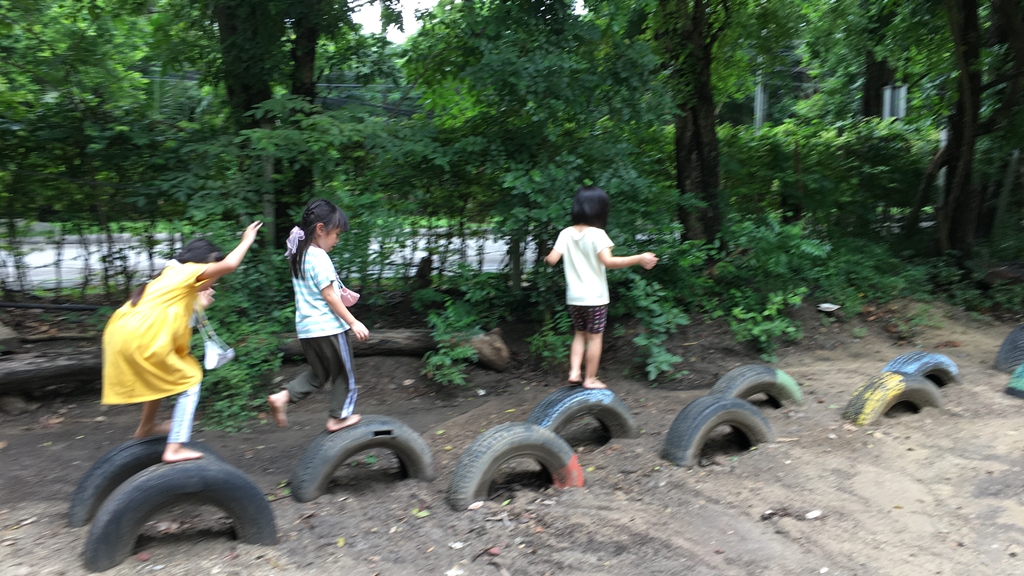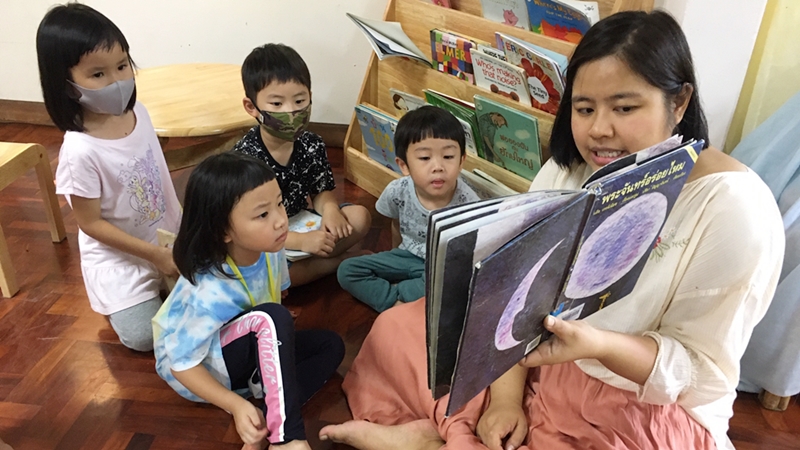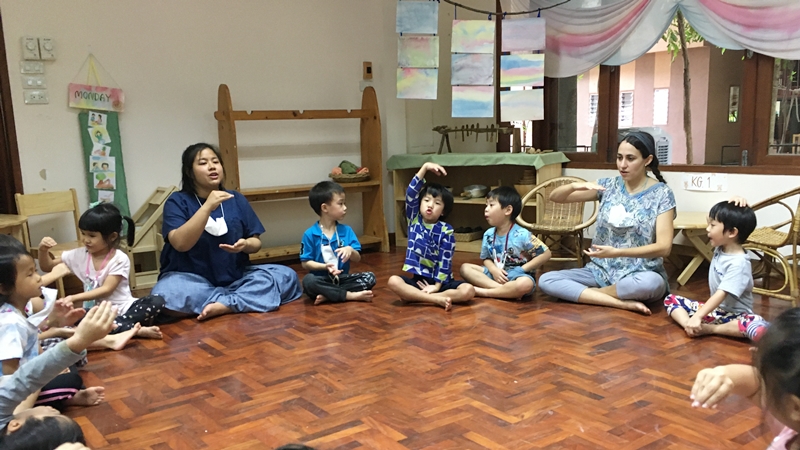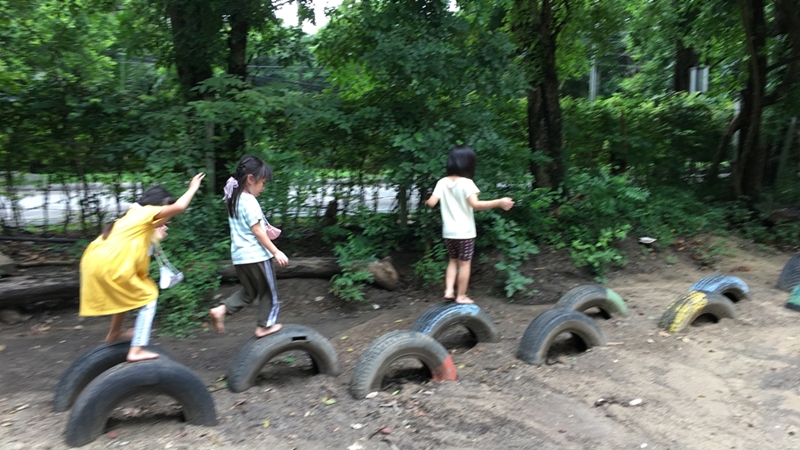
Learning by Living: The Rhythms and Routines of a Kindergarten Day

Learning by Living: The Rhythms and Routines of a Kindergarten Day at Roong Aroon School
By Robin Martin, Scholar of Corporate Communications Department, Roong Aroon School Foundation
Learning in kindergarten is far more than learning skills or facts or knowledge. Learning in kindergarten is learning how to move through the rhythms and flow of a full day in sync with others. The two experienced teachers in the River Room, Teachers Fern and Andrea, work together to keep an eye on all the students, connecting with as many students in depth each day as they can. It’s not easy. It takes patience, attention, and mindfulness too, along with an understanding of the rhythms and routines best suited for the needs of KG students.
With three levels of KG, from ages 3 to 6, there’s a lot of energy to monitor, absorb, and release every day. Much care is taken to make sure that no student falls through the cracks of the busy day, though students are also given responsibility as they learn to help and to monitor themselves in each new day. No day is ever the same, but there is a pattern of routines that students soon learn. Familiar patterns help the children to learn self-management.
The Importance of Rhythms and Routines for Learning in KG

Cru Air, the head of KG at Roong Aroon, explains the rationale for how the KG day is organized with a sequential series of structured and unstructured activities:
The rhythm helps the kids to manage themselves consistently because from the routine they will gradually learn, ‘Okay, this time we do this activity, this time is for snack, this time is for free play.’ So it helps them, little by little, to manage themselves.
The rhythm of the day can be compared to the breathing of humans. So when we breathe in, we can really feel the inner organs working, we can feel the clearness inside. So the breathing in is like the structured activities for the kids, either be it the circle time, the integration time, story time, they will learn. During the daily activity, it will go from one to another.
Breathing out is like we relax. So, breathing out is like free play, playing outside, taking a relaxing walk, when they can also manage themselves during that time. So in the day, you have structured activities and relaxing activities, mixing, just like breathing in and breathing out.

So the day is planned with a series of activities for about the length of time when most children’s attention will begin to wander. Then, teachers can observe if all the children are engaged to allow an activity to go longer. From early morning, the day is structured for free play, then circle time, then snack time, then integration, and then free play, lunch, story time, then literacy. So, it’s structure, relax, structure, relax. Sometimes, when playing outside, their attention span goes much longer than the typical 15 minutes, so teachers observe this and make the necessary adjustments. Flexibility in the scheduling is also important.
The daily routines lead to a smooth flow and pacing of the day which the students can observe and notice. Time is given for the transitions so students don’t feel rushed, helping with clean up and often feeling eager for the next activity.As the term goes on, some students begin looking for the transitions, and help teachers to alert peers to clean-up or that it’s time to gather together for the next activity.
Together, the benefits of routines and rhythms in the kindergarten day support children in learning to manage themselves. Teacher Andrea explains that:
…[children] become more aware of the flows of the day without too much direction from teachers. For example, our children know that when they hear “five little ducks” outdoor play is finished and they need to come inside.
By repeating the routines daily (with adjustments as needed), the children come to understand that after playtime outside, next is “starfish” — spreading out and relaxing quietly on the floor. Thus, they begin to develop self-discipline, “and they have ownership of their experiences because they know on their own what is coming next.”

